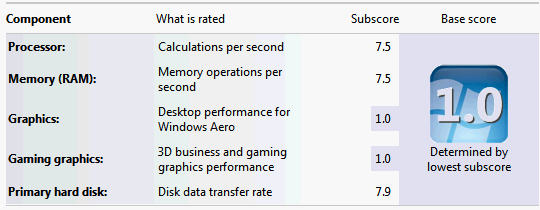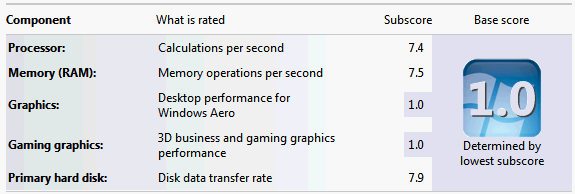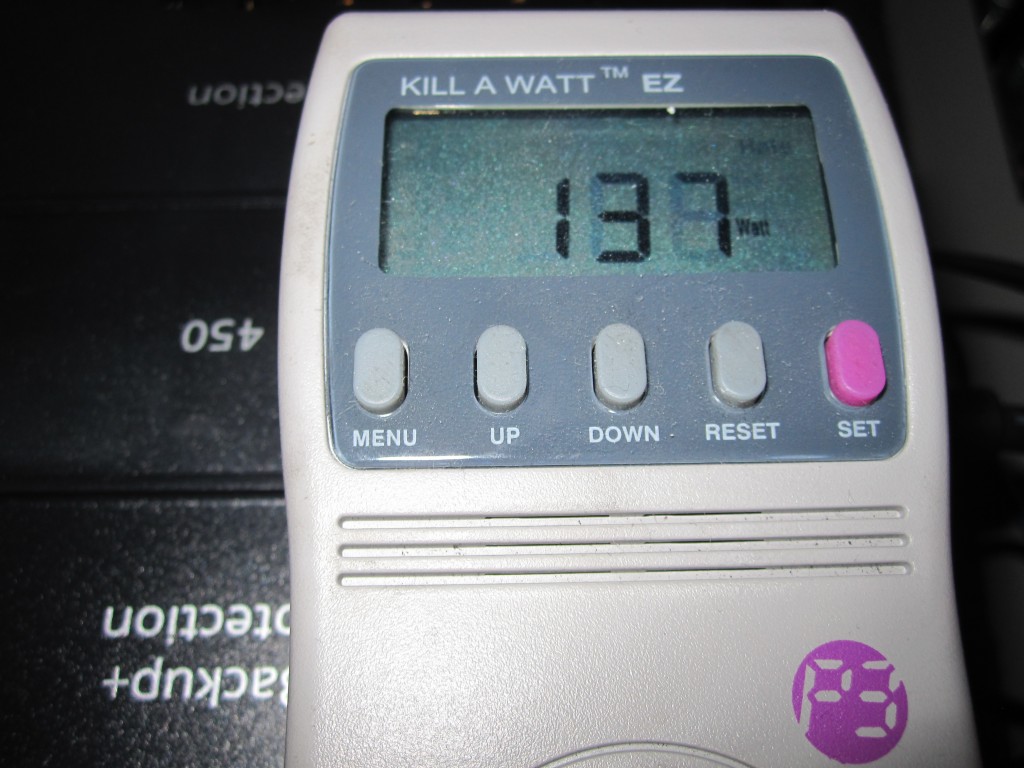After the Intel Xeon X3440 review, I wanted to see the difference between the X3440 and the Intel Core i7-860. Of course, I could have just purchased a Core i7-860, but instead I decided to get an Intel Xeon X3460 because it is essentially the same CPU, just with ECC support. For all intents and purposes, the Intel Xeon X3460’s performance should be identical to the Core i7-860.
The major difference between the Intel Xeon X3460 and the previously reviewed Xeon X3440 is clock speed. The X3460 runs at 2.8ghz while the X3440 runs at 2.53GHz. Price wise the 0.27ghz will cost another $120 or about 50% more depending on street price fluctuation.
To keep this comparable, I wanted to see a performance of the X3460 versus the other CPU’s I have tested for video encoding and transcoding on a Windows Home Server platform. Second, I wanted to have a server running Microsoft Hyper-V Server with Windows Home Server and Ubuntu 10.04 as guest operating systems running in Hyper-V virtual machines. In the end, I found that the Xeon X3460 was slightly faster than I had anticipated.
 Test configuration
Test configuration
The below represents the test configuration used for this review. I was again able to use the PicoPSU with this setup, as I was in the Xeon X3440 review, assuming no mechanical disks were attached. I was again pleasantly surprised that I did not need to move to a larger PSU as I had to with the AMD Phenom II X4 955 Black Edition review. I thought that this would be a potential risk given the additional speed of the X3460.
- CPU(s): Intel Xeon X3460
- Motherboard: Supermicro X8SIL-F Rev. 1.02
- Memory: 4GB of Kingston ECC 1333MHz DDR3 KVR1333D3E9SK2/4G (Unbuffered)
- Case: Norco RPC-4220
- Drive(s): Intel X25-V 40GB
- Power Supply: PicoPSU 150XT
- OS(es): Windows 7 Pro 64-bit
For most home servers, this is considerable overkill. However, when video transcoding tasks get offloaded, virtual machines are added, or ECC memory is required, CPUs like the Xeon X3460 start to make sense.
CPU Feature Comparison
The Intel Xeon X3460 is very similar to the Intel an interesting CPU in Intel’s Xeon 3400 series based off of Intel’s Lynnfield architecture. Speed wise, it is clocked at 2.53GHz which is slightly slower than the Intel Core i5 750 (which is a 2.66GHz part) and the Core i7 860.
| CPU | i3-530 | i5-750 | X3440 | i7-860 | X3460 |
| Architecture | Clarkdale | Lynnfield | Lynnfield | Lynnfield | Lynnfield |
| # of Cores | 2 | 4 | 4 | 4 | 4 |
| # of Threads | 4 | 4 | 8 | 8 | 8 |
| Clock Speed (Base) | 2.93 GHz | 2.66 GHz | 2.53 GHz | 2.8 GHz | 2.8 GHz |
| Max Turbo Frequency | N/A | 3.2 GHz | 2.93 GHz | 3.46 GHz | 3.46 GHz |
| Cache | 4MB | 8MB | 8MB | 8MB | 8MB |
| Multiplier | 22 | 20 | 19 | 21 | 21 |
| Lithography | 32 nm | 45 nm | 45 nm | 45 nm | 45 nm |
| Max TDP | 73 W | 95 W | 95 W | 95 W | 95 W |
| 1ku Bulk Budgetary Price | $113.00 | $196.00 | $215.00 | $284.00 | $316.00 |
| Max Memory Size | 16 GB | 16 GB | 32 GB | 16 GB | 32 GB |
| ECC Memory Supported | No | No | Yes | No | Yes |
| Integrated Graphics | Yes | No | No | No | No |
| PCI Express Configurations | 1×16, 2×8 | 1×16, 2×8 | 1×16, 2×8, 4×4 | 1×16, 2×8 | 1×16, 2×8, 4×4 |
| Turbo Boost | No | Yes | Yes | Yes | Yes |
| Hyper-Threading | Yes | No | Yes | Yes | Yes |
| VT-x | Yes | Yes | Yes | Yes | Yes |
| VT-d | No | No | Yes | Yes | Yes |
| Trusted Execution | No | No | Yes | Yes | Yes |
As one can see above (taken from Intel’s spec pages), the Xeon X3460 is the Xeon 3400 series version of the Core i7 860. It has four physical cores plus hyper threading, a big cache, ECC memory support and VT-d which are all fairly useful home server features. Perhaps the most interesting is the budgetary quote price, which is just above the i7 860’s. The prices above will vary from street price and typically the Xeon’s sell for a bit more than that budgetary price and the i7 860’s a bit less. The Xeon X3460 has support for ECC memory. While ECC memory may not be absolutely necessary in a home server or small business server environment, as one starts to build servers that need four physical cores (and four more logical cores with hyper threading), ECC memory makes more sense. When building large storage servers with ten or more large capacity drives, the cost of upgrading to a CPU, motherboard, and memory that can support ECC functions is negligible.
Performance Benchmarks
Windows Experience Index
Windows 7’s built in Windows Experience Index delivered the CPU score that I had expected for the Xeon X3460 running in a Supermicro X8SIL-F given my previous experience.

Compare this to the X3440 results which were only slightly slower.

This is better than the CPU score I got in the AMD Phenom II X4 955 Black Edition review with the AMD chip clocked to Phenom II X4 965 BE speeds and the same as my Core i7 920 (which got a 7.5) at stock clocks. Also interesting here is that the memory speed is identical to my Core i7-920 despite using dual channel ECC memory on the Xeon 3460. Again, I did have two Intel X25-V 40GB SSDs in Raid 0 at the time I took this screen capture to get the 7.9 hard drive score. Also, the 1.0 overall WEI score is due to the onboard 8MB video of the Supermicro X8SIL-F which is geared for KVM over IP purposes.
Handbrake 0.9.4 x264 video encoding results
My other favorite benchmark is encoding x264 video using Handbrake 0.9.4 on CPU’s. This is because many people store video files on their Windows Home Server, and video encoding/ transcoding takes a lot of CPU power. It oftentimes makes sense to utilize the Windows Home Server to do this encoding for iPods, iPhones, iPads, Zune HDs and etc rather than a main PC due to the fact that video encoding uses 90%+ of available CPU cycles, slowing down the system it runs on. Here is the table, expanded for the new entrants:
| x264 Handbrake 0.9.4 Encode | |
| CPU | fps |
| Atom N330/ION | 21fps |
| Sempron 140 | 29fps |
| Q6600 | 84fps |
| Core i3-530 | 90fps |
| Core i5-650 | 97fps |
| Phenom II X4 955 BE | 151fps |
| Xeon X3440 | 155fps |
| Phenom II X4 965 BE | 160fps |
| Xeon X3460 | 179fps |
| Core i7 920 | 179fps |
This is a very cool result. It shows the Xeon X3460 on par with the Core i7 920 on handbrake and a more significant improvement, speed wise, over the X3440 than I would have expected. Hyper Threading has known issues with Handbrake 0.9.4 however, as I have stated previously, I feel that the availability of additional logical cores when running virtual machines outweighs slightly slower Handbrake encoding speeds. Another hypothesis I have is that the turbo boost is being applied more aggressively on the Core i7 920 and Xeon X3460 than the Xeon X3440. Either way, the X3460 numbers are similar to what I would expect to see from a Core i7 860. A 18.1% increase in clock speed led to a 15.5% increase in encoding performance. That is about as expected. I am surprised that the Xeon X3460 was not faster than the Core i7 920 though. The i7 920 has a much lower max turbo frequency of 2.93ghz.
Power Consumption
Power consumption on the Intel Xeon X3460 was again better than expected. The setup was able to be powered by a PicoPSU provided a 4-pin to 8-pin adapter cable was used to provide CPU power to the motherboard. Idle power consumption I already have mentioned however here it is again:
Not too bad for a high-end CPU. Given, this idle power consumption is approximately 1.5x that of an Intel Atom N330 and NVIDIA ION combination, however, it is considerably less than the Phenom II X4. Astute readers will notice this is the same picture as I used for the Xeon X3440 idle numbers. I am a fairly poor photographer and the 48w picture that I thought looked OK on the preview LCD ended up looking very poor once I downloaded it off the camera.
For comparison the X3460 is is a bit faster than the competing AMD Phenom II X4 965BE platform performance wise. Like the Xeon X3440 the X3460 excels from a power consumption perspective using less less power than the AMD Phenom II X4 955 Black Edition (again, using 125w version in my review not the 140w version). The max power consumption with the PicoPSU is getting very close to the rated 150w maximum with the Xeon X3460 so a direct comparison was not available.
Overall, 137w is only 2w more than the X3440, yet when encoding x264 video, the X3460 is significantly faster. I think the PicoPSU 150XT’s maximum power output is rated for 150w but this is close enough that I cannot imagine running this 24×7. I would therefore strongly recommend using a larger power supply to power a Xeon X3460 based system.
Conclusion
Overall, the Intel Xeon X3460 is a very fast chip from Intel for people doing video encoding/ transcoding on their Windows Home Servers, next-generation Windows Home Server V2 codename VAIL servers, and Linux/ handbrake servers. It has the speed of a Core i7 860 or Core i7 920 but with ECC memory support. For those running virtual machines with Windows Home Server either on Hyper-V or VMWare ESXi is that the Xeon X3460 may make sense to get ECC support. The next step up is the Xeon X3470, which generally retails for 50% more than the X3460. Looking at the difference between the X3440 and X3460, the X3470 makes little sense in a NAS virtual machine server unless that last, small amount of performance is really needed. Further, it is hard to recommend the X3460 over the X3440 because the CPUs have the same feature set and most users will not require the extra performance. Of course, if encoding video slightly faster or running a virtual machine doing something at high CPU utilization is important, then the Xeon X3460 may be a good choice.






With this being so close in price to the Core i7 860 I cannot believe that anyone buys the non-Xeon version.
Did that motherboard have a baseboard management controller using power?